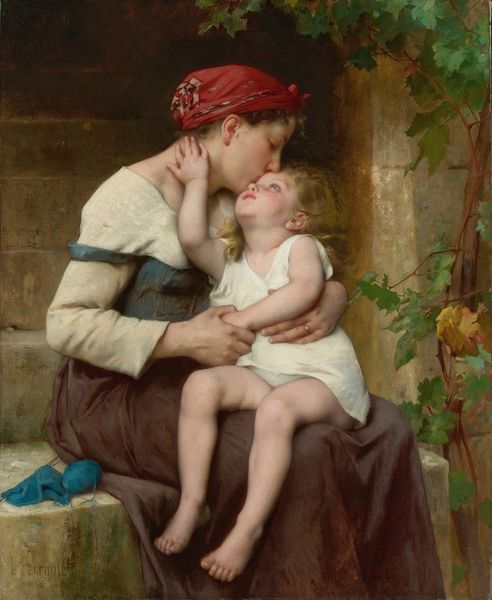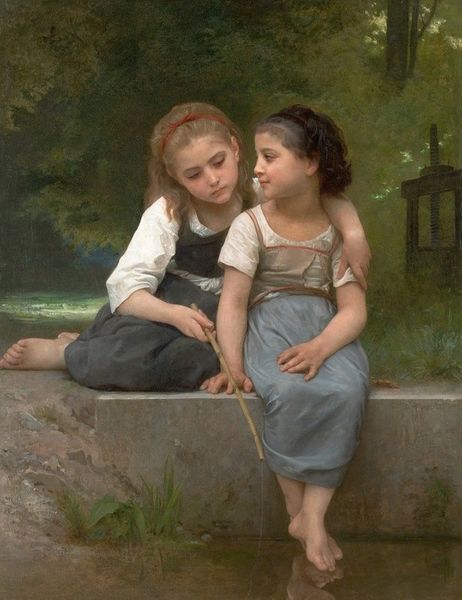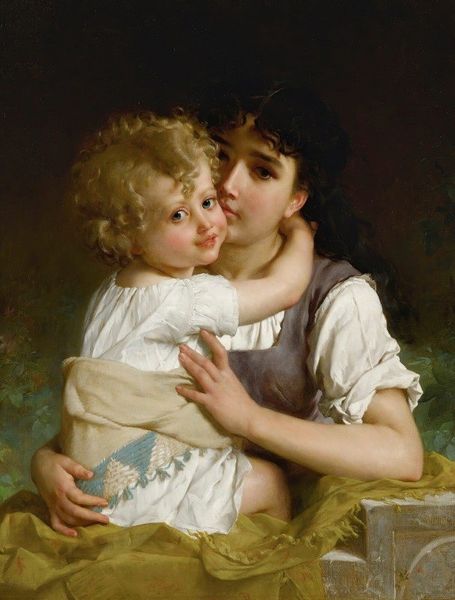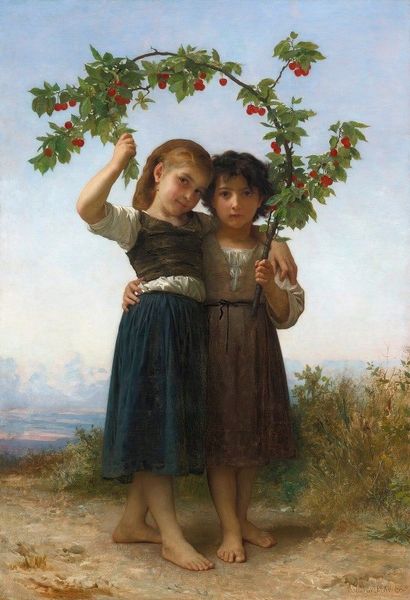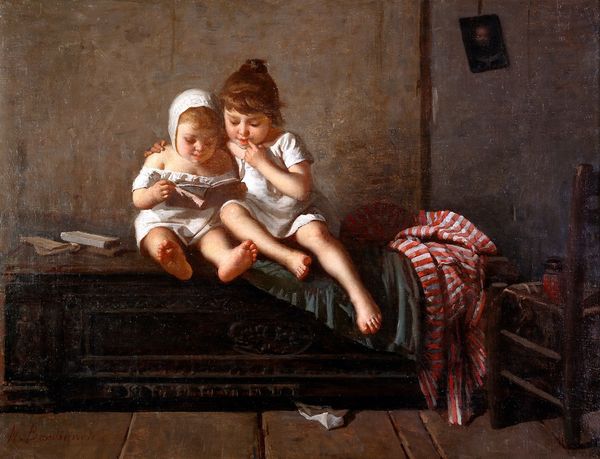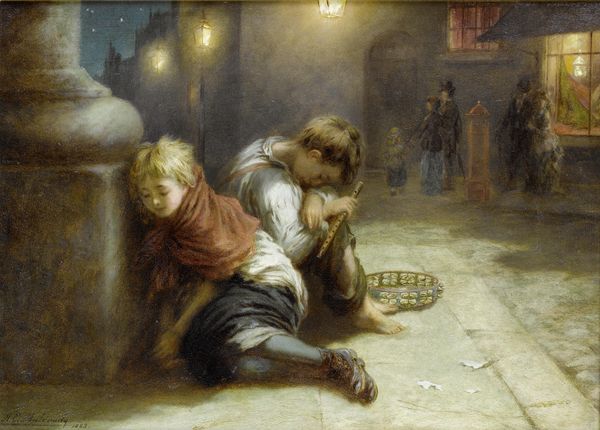
Dimensions: 114.3 x 90.4 cm
Copyright: Public domain
Curator: Perrault’s "Out in the Cold," painted in 1890, offers us a snapshot of hardship, portraying two children seeking respite on snow-covered steps. The tender vulnerability it captures is immediately striking. Editor: Absolutely, and that vulnerability seems purposefully crafted through Perrault’s technique. Look at the way he uses impasto to build up the textures of their worn clothing and the rough surface of the steps. The labor and the conditions are materialized right there on the canvas. Curator: You’re right to emphasize the materiality. Their clothes, though tattered, also speak to the social stratification of the period. This wasn’t merely about rendering subjects; it was about capturing the texture of their lived experiences. The red of the tambourine jumps forward as an assertion of their trade and identity, against the cold neutral background tones, and muted blues. Editor: Indeed. Consider the historical context, too. The late 19th century saw widespread urbanization, and a parallel increase of child poverty, forcing children into the labor market. Perrault highlights that with the inclusion of their instruments of labor: an accordion, a tambourine. These details position them within the societal systems of marginalization, a stark contrast to the romanticized views of childhood that often dominated art. Curator: The romantic brushwork seems somewhat contradictory. There is no grit or grime here. They seem neat, somehow removed from what must have been the dirt and difficulties of that life. Maybe Perrault himself was attempting a removal of a sort? Or an idealizing gentrification of sorts. Editor: Possibly. But I think he successfully, simultaneously captures that distance we have with people, that are unfortunately too common to us, in order to make the viewer stop and examine our own relationship to the socioeconomic conditions, not only during Perrault's time but to this very day. Curator: True, its relevance extends beyond the period. We still grapple with issues of child labor and social inequality. This piece then serves as a reminder—materially realized and historically contextualized—of enduring social challenges. Editor: It makes you wonder about what actions we need to take, and the systems we still create, participate in and benefit from to make similar struggles less pervasive.
Comments
No comments
Be the first to comment and join the conversation on the ultimate creative platform.

